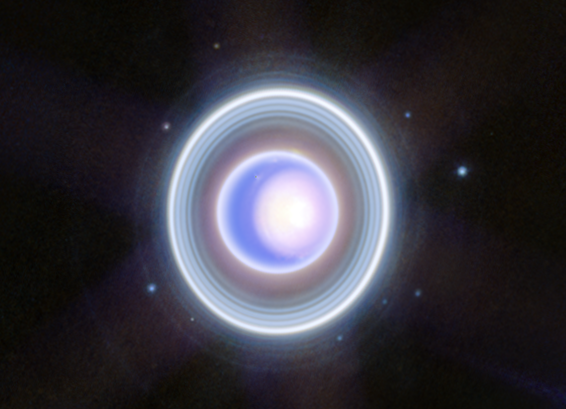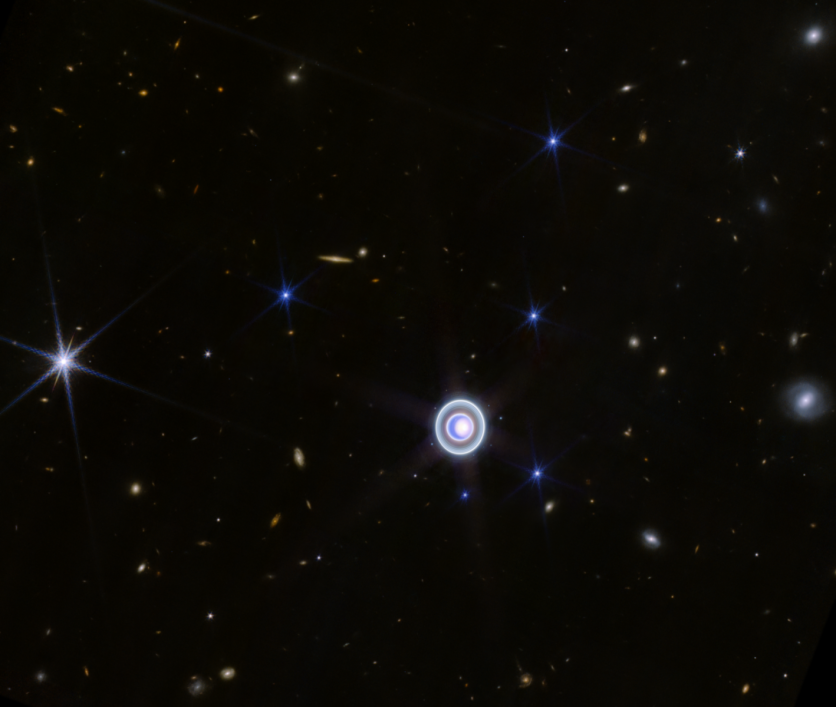NASA's James Webb Space Telescope has recently provided a captivating and detailed image of Uranus, including one of its more elusive rings.
NASA Capturing Uranus' Unique Features
The telescope, equipped with remarkable sensitivity, captured the unique features of the ice giant known for its peculiar sideways rotation, including its rings, moons, storms, and a seasonal polar cap.
According to NASA, this new image builds upon an earlier two-color version, offering a more comprehensive view by incorporating additional wavelength coverage.

The James Webb Space Telescope's advanced capabilities allowed it to capture Uranus' inner and outer rings, including its most elusive Zeta ring - a faint and diffuse ring closest to the planet. The telescope also revealed several of Uranus' 27 known moons, showcasing small moons within the intricate ring system.
While Voyager 2's observations in the 1980s depicted Uranus as a serene, solid blue sphere in visible wavelengths, the James Webb Space Telescope's infrared observations unveil a dynamic ice world with intriguing, atmospheric features.
Uranus's seasonal north polar cloud cap is one of the most noteworthy features captured. In contrast to an earlier image from the Webb telescope, the newer images offer enhanced visibility of details within the cap, such as the bright white inner cap and a dark lane at the bottom toward the lower latitudes.
Read Also : NASA's James Webb Space Telescope Captures Stunning Image of 'Hidden' Ghostlike Dusty Galaxy

Vibrant Storms in Uranus
Numerous vibrant storms are also observable near and beneath the southern boundary of the polar cap. Astronomers posit that the appearance and frequency of these storms may result from a blend of seasonal and meteorological factors.
As Uranus approaches its upcoming solstice in 2028, researchers are eager to observe potential alterations in the characteristics of these atmospheric phenomena.
Uranus, distinguished by its extreme axial tilt of approximately 98 degrees, undergoes the most pronounced seasons in the solar system. According to NASA, with almost a quarter of each Uranian year featuring sunlight over one pole, the remaining half is shrouded in a dark, 21-year-long winter.
Webb's powerful infrared resolution and sensitivity offer astronomers remarkable clarity, enabling a more profound comprehension of Uranus's intricate atmosphere.
The detailed observations, particularly of the Zeta ring, are anticipated to be invaluable for planning future missions to Uranus. The telescope's unparalleled capabilities open up new avenues for exploring the mysteries of this distant ice giant.
Moreover, Uranus is a valuable proxy for studying the numerous similarly sized exoplanets discovered in recent decades. As a nearby example of a sizable exoplanet, Uranus aids astronomers in comprehending the meteorology, formation, and workings of planets of this scale.
Related Article : New Computer Simulation Sheds Light on Early Galaxy Formation Aligned With NASA James Webb's Observations

ⓒ 2025 TECHTIMES.com All rights reserved. Do not reproduce without permission.




